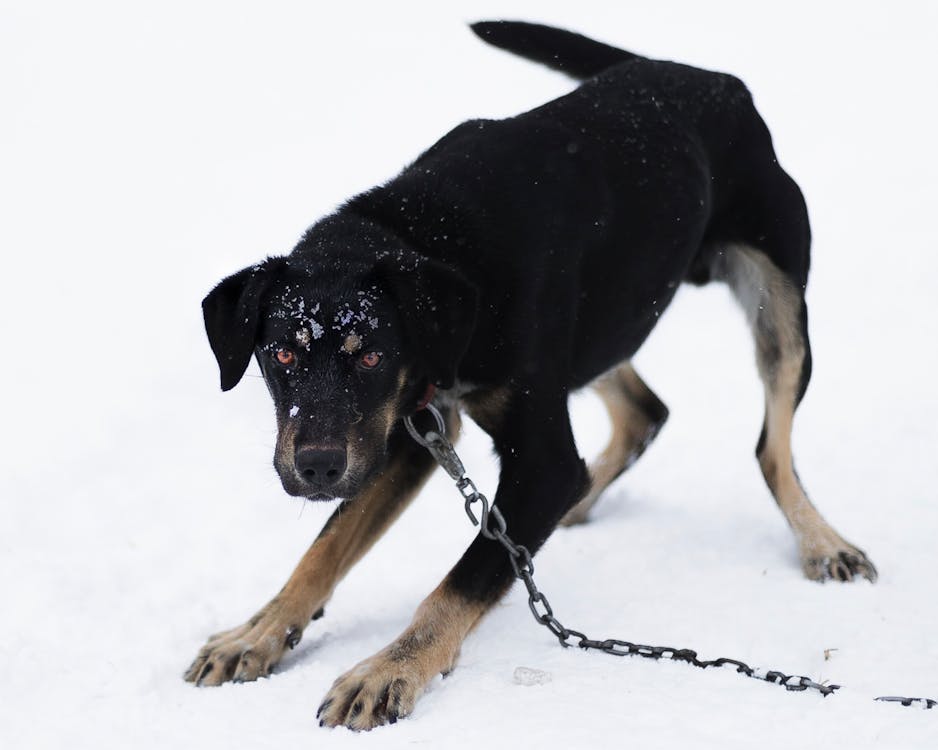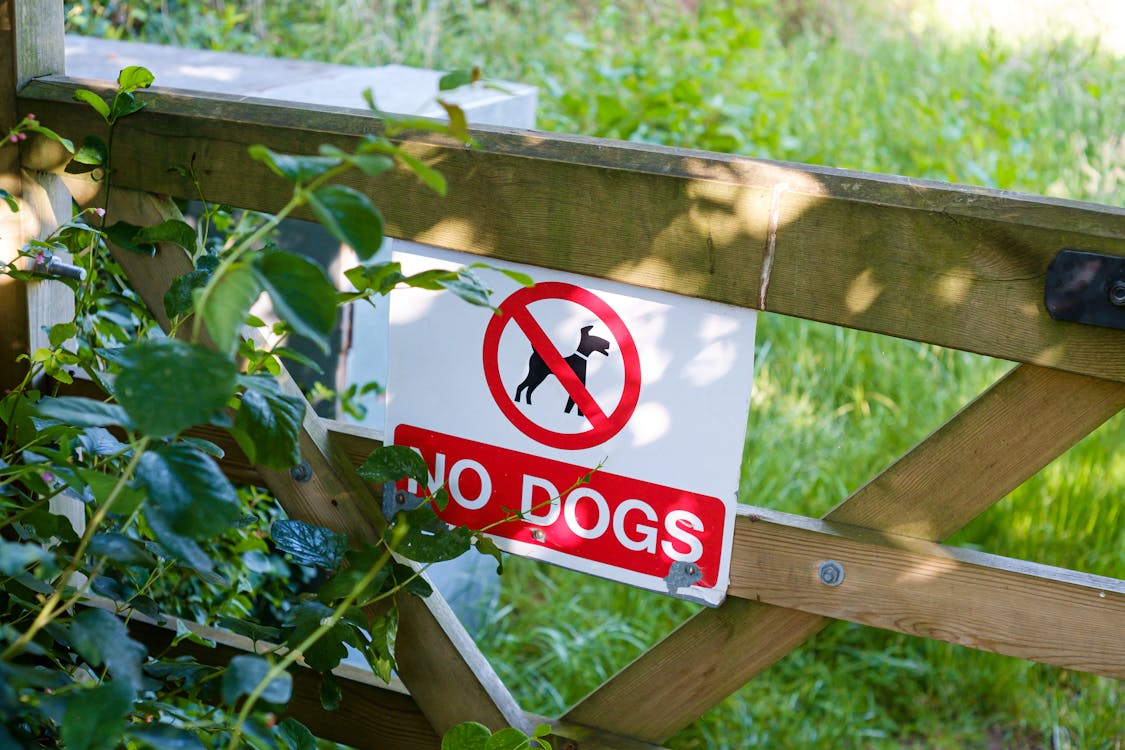Dogs are known for their loyal and affectionate nature, but like any other living being, they can experience emotions such as fear and aggression. Aggression and fear in dogs are complex behaviors that can be caused by a variety of factors, including genetics, environment, socialization, and past experiences. As responsible dog owners, it is crucial to recognize the signs of aggression and fear in our canine companions and understand the underlying causes to provide them with appropriate care and training. In this article, we will delve into the world of dog aggression and fear, exploring its causes, signs, and effective management techniques.
Types of Dog Aggression

Aggression in dogs can manifest in various forms, each with its distinct triggers and underlying reasons. The common types of aggression include:
a. Fear Aggression: Fear aggression occurs when a dog reacts defensively to perceived threats or situations that make them uncomfortable or anxious. It is often characterized by defensive postures, cowering, or avoidance behaviors.
b. Territorial Aggression: Dogs may exhibit territorial aggression when they feel the need to protect their living space or possessions. This behavior is particularly common in dogs with a strong sense of territory.
c. Dominance Aggression: Dominance aggression arises when a dog perceives itself as higher in the pack hierarchy and asserts its authority through aggressive behaviors. This type of aggression is often directed towards other dogs or even humans in some cases.
d. Possessive Aggression: Dogs with possessive aggression display aggression when they are unwilling to share resources such as food, toys, or attention with others.
e. Redirected Aggression: Redirected aggression occurs when a dog is unable to direct its frustration or aggression towards the actual trigger and instead redirects it towards a nearby person or animal.
Causes of Dog Aggression
Aggression in dogs can stem from a combination of genetic predisposition and environmental factors. Some common causes of aggression include:
a. Lack of Socialization: Poor socialization during a dog’s early developmental stages can lead to fear-based aggression in unfamiliar situations or towards unfamiliar people or animals.
b. Past Traumatic Experiences: Dogs that have experienced abuse, neglect, or traumatic events may develop aggressive behaviors as a coping mechanism to protect themselves.
c. Genetic Factors: Certain breeds may have a genetic predisposition to display aggressive tendencies, although it is essential to note that individual dogs can vary greatly within a breed.
d. Medical Issues: Underlying medical conditions, pain, or discomfort can also lead to aggressive behavior in dogs, as they may become irritable or defensive.
e. Resource Guarding: Dogs that feel the need to protect their possessions, such as food, toys, or sleeping areas, may display possessive aggression.
Signs of Dog Aggression

Recognizing the early signs of aggression in dogs is crucial for addressing the issue promptly and effectively. Some common signs of aggression include:
a. Growling: Growling is a clear indication that a dog is feeling threatened or uncomfortable. It serves as a warning to back off.
b. Snapping: Snapping is a quick and sudden attempt to bite and is usually a result of feeling cornered or threatened.
c. Lunging: Dogs may lunge forward aggressively, particularly when on a leash, as a means of trying to reach a perceived threat or target.
d. Showing Teeth: Baring teeth is a clear sign of aggression and indicates that a dog is prepared to escalate the situation if necessary.
e. Stiff Body Language: Dogs exhibiting aggression often have stiff and tense body postures, accompanied by a fixed stare.
Understanding Fear in Dogs
Fear is a natural emotion experienced by dogs, just as it is in humans. It serves as a survival mechanism, helping dogs avoid potentially dangerous situations. However, excessive or irrational fear can significantly impact a dog’s quality of life and overall well-being. Fearful dogs may exhibit various signs, including:
a. Trembling or Shaking: Shivering or trembling is a common physical response to fear and anxiety in dogs.
b. Cowering or Hiding: Dogs may try to minimize their presence and hide when faced with fear-inducing stimuli.
c. Pacing or Panting: Restlessness and increased breathing are common signs of anxiety and fear in dogs.
d. Excessive Barking or Whining: Some dogs may vocalize excessively when feeling afraid or threatened.
e. Avoidance Behavior: Fearful dogs may try to avoid or retreat from the source of their fear, such as loud noises or unfamiliar environments.
Causes of Fear in Dogs

Fear in dogs can arise from various factors, and each dog may have its unique triggers. Some common causes of fear in dogs include:
a. Lack of Early Socialization: Dogs that are not adequately exposed to various people, environments, and experiences during their early developmental stages may develop fear-related issues.
b. Traumatic Experiences: Past traumatic events, such as abuse or accidents, can leave lasting emotional scars and lead to fear and anxiety in dogs.
c. Loud Noises: Many dogs experience fear or anxiety in response to loud noises, such as thunderstorms, fireworks, or loud machinery.
d. Change in Environment: Relocation, changes in living conditions, or new additions to the family can be stressors that trigger fear in some dogs.
e. Lack of Confidence: Dogs with low self-confidence may be more prone to developing fear-related behaviors.
Managing Dog Aggression and Fear
Dealing with aggression and fear in dogs requires a patient and understanding approach. Here are some effective management techniques:
a. Positive Reinforcement Training: Reward-based training can be highly effective in reducing fear and aggression. It helps build trust and positive associations with previously feared stimuli.
b. Gradual Desensitization: Gradually exposing a dog to its fear-inducing triggers in a controlled and positive manner can help desensitize them over time.
c. Counter-Conditioning: Pairing the presence of the fear-inducing stimulus with something positive, like treats or play, can help change the dog’s emotional response.
d. Avoidance: If a dog displays aggression towards specific triggers, avoiding those situations is essential to prevent potential escalation.
e. Seeking Professional Help: In cases of severe aggression or fear, consulting with a professional dog trainer or behaviorist is recommended to develop a tailored management plan.
Understanding and addressing aggression and fear in dogs is crucial for ensuring their well-being and creating a safe and harmonious environment for everyone involved. By recognizing the signs of aggression and fear, identifying the underlying causes, and employing effective management techniques, dog owners can help their furry companions lead happier, healthier lives. Patience, consistency, and positive reinforcement are key when working with dogs facing these challenges, as building trust and a positive emotional bond are essential elements in helping them overcome their fears and anxieties.


